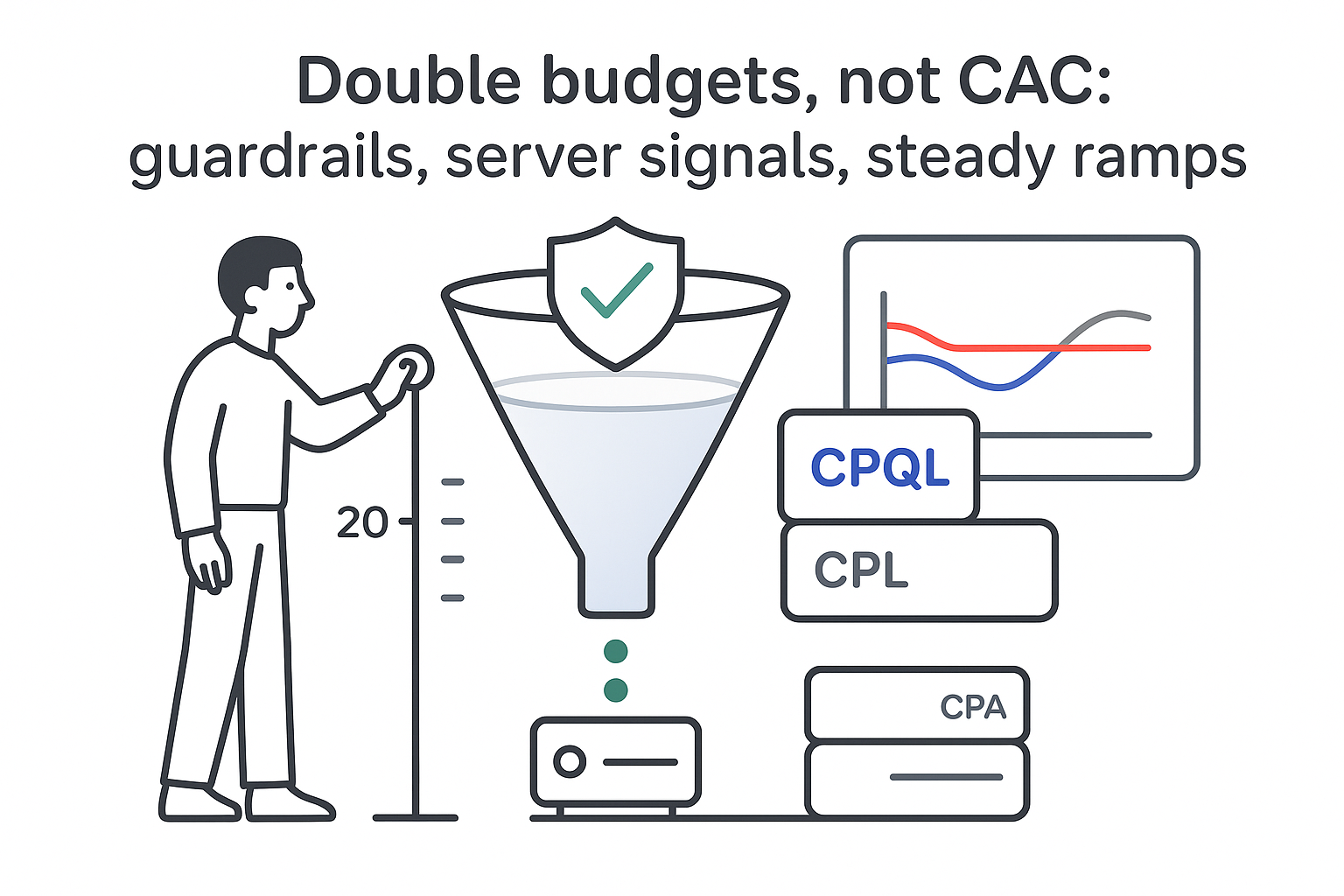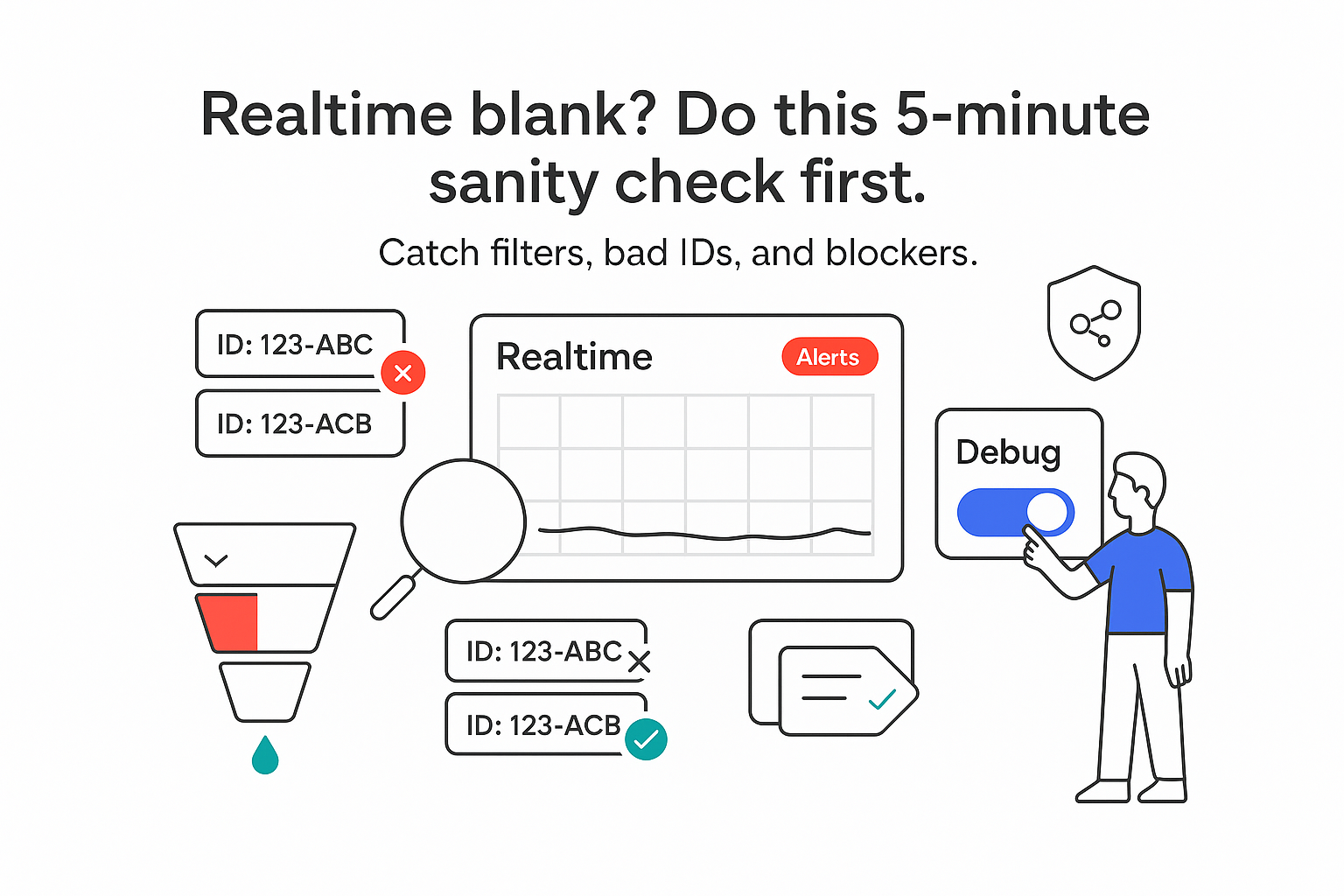Server-side tracking
I live by the numbers, and server-side tracking is how I close the gap between what ad platforms report and what my CRM confirms. In roughly 30 days, I can usually recover missing conversions and clean up match rates. By about 60 days, cleaner conversion signals start feeding the platforms and CAC begins to drift down. Around 90 days, revenue attribution across long B2B buying cycles carries fewer blind spots, so budget calls feel earned rather than guessed.
At a glance, why I switch now:
- 15-40% lift in attributed conversions on core paid channels and 10-25% lower blended CAC as platforms optimize on better signals (ranges I have seen across implementations - validate with holdouts for your stack)
- Clearer multi-month attribution that fits B2B sales cycles instead of forcing decisions on week-long views
- Tighter control over what is collected, how long identifiers live, and where payloads go in a post-third-party-cookie world
Server-side tracking shifts data collection from the browser to a first-party endpoint I control. That sounds minor; it is not. Browsers and privacy tools care far less about first-party traffic to my own subdomain than they do about third-party pixels. The result is fewer lost events, stronger identifier persistence (within consent), and better match rates for Google Enhanced Conversions, Meta Conversions API, and LinkedIn Conversions API. For a third-party view on the benefits, see Stape.
How server-side tracking works
The flow is simple: browser events (page view, form submit) go to a first-party server container on my subdomain (for example, track.example.com), which validates, transforms, and forwards them to analytics and ad platforms. In practice, that middle step is the fulcrum. I can enrich events with consented identifiers, standardize names, deduplicate with event_id, and hash PII server-side before anything leaves my domain. Secrets stay on the server, not in the browser. I also define retention windows for first-party cookies so a long-ago click can still resolve to the right buyer within policy.
Hosting a server container typically sits on Google Cloud or AWS with autoscaling. Lightweight sites often land in the $50-$150 per month range; heavier traffic or enrichment can run $200-$300+ depending on configuration. Costs are manageable when I tune caching and keep-alive settings to reduce egress and CPU, and they are easy to justify against even modest gains in conversion capture and CAC. If you are newer to website analytics, align your fundamentals first so the server-side signals have a clean foundation.
What breaks in client-side tracking
The old way fires third-party pixels in the browser and posts events directly to platforms. On paper, that is simple. In reality, several headwinds compound each other:
- Safari ITP and Firefox ETP shorten cookie life and strip cross-site identifiers; Chrome's phase-out of third-party cookies continues alongside growing privacy features; iOS 17's Link Tracking Protection removes parameters like fbclid more often; consent prompts lower opt-in rates; and ad blockers disrupt front-end scripts, all while thresholding and sampling blur results at lower volumes.
Here is what that feels like if I am accountable for revenue: under-reported conversions (often 20-40% below what sales sees), disagreement between CRM and ad platforms on lead counts and sourced revenue, creeping CAC even when creative and landing pages are steady, and channels that actually contribute beginning to look weak because their signals get filtered. Nothing is wrong with the idea of client-side tracking; the ecosystem has simply squeezed that pathway.
What a server container unlocks
Server-side collection gives me first-party events with consented, longer-lived identifiers that arrive reliably, which is why match rates improve for Enhanced Conversions and the major Conversions APIs. Because keys and secrets are shielded in a secure server, I reduce the risk of leakage. Centralizing logic lets me enforce consent consistently, deduplicate against browser events via event_id, validate schemas, and drop fields I do not need before forwarding. The net effect is reliability (fewer lost events), control (only send what is required), and compliance (consent and hashing enforced at the edge I own).
Pipelines are straightforward: GA4 via Measurement Protocol, Google Ads Enhanced Conversions, Meta's Conversions API, and LinkedIn's Conversions API for key events like lead and scheduled meeting. With robust deduplication, I can safely run both browser and server paths during transition without inflating counts. If you are building GA4 events now, this guide can help: How To Set Up Key Events In Ga4.
Applying it to B2B lead generation
This is where server-side tracking earns its keep. B2B motions are multi-touch and slow, and I need to connect a first click to a whitepaper, to a demo, to an opportunity, to a closed-won record. Client-side setups drop those threads; server-side tracking holds them longer - within consent - and shares cleaner feedback with the algorithms that actually scale results.
In practice, I persist click identifiers (GCLID, fbclid, msclkid) as first-party values when consent is present; capture user_id when available; and hash emails with SHA-256 server-side. I standardize GA4 event names and event_id server-side, extend attribution windows with first-party cookies to reflect real sales cycles, and send Enhanced Conversions to Google plus Conversions API events to Meta and LinkedIn so their models learn from the people who become customers. I then connect CRM events back into platforms as offline conversions with timestamps and IDs, and I train bid strategies toward SQL or Opportunity, not shallow form fills. When platforms see more of the actual buyers, they stop chasing junk leads; cost per qualified lead falls and pipeline quality rises.
To keep signals aligned with the funnel, I map stages like this:
- MQL when a qualified form is submitted or gated content meets a threshold
- SQL when a meeting is booked or a discovery call is logged
- Opportunity when a deal is opened in the CRM
- Closed won when revenue is recognized
Challenges and how I plan for them
This is not a copy-paste pixel job. I plan a phased rollout, starting with the highest-impact forms and one demo flow, then expanding to all lead sources and content downloads once deduplication and payloads look clean in debugging tools and platform logs. I reconcile with the CRM for a few weeks and fix field mapping early, then add offline conversions and revenue stages before I shift bidding toward deeper goals.
Data governance comes first: I define which PII is allowed, hash emails with SHA-256 server-side, and drop anything unnecessary. Consent enforcement is non-negotiable: I respect Consent Mode v2, carry consent flags in the payload, and block forwarding when a user declines. For security, I whitelist vendor endpoints so the server container cannot post to unknown services, and I keep secrets out of the browser.
Reliability requires discipline. I validate event schemas and consent flags before forwarding, use idempotency keys so retries do not inflate counts, and align event_id values for deduplication between browser and server paths. Every site release gets regression tests because tracking breaks hide in harmless-looking UI changes. Cloud costs stay in check when I monitor egress, cache wisely, and right-size instances rather than throwing compute at the problem.
Proving data accuracy and impact
Better signals in means better targeting out, but I do not claim uplift without measurement. I track a few leading indicators closely:
- Match rates for Enhanced Conversions and CAPI (email and phone)
- Modeled versus observed conversions in Google Ads after Consent Mode v2
- Blended CAC and media efficiency ratio across core channels
- GA4-to-CRM reconciliation, especially at SQL and Opportunity
Before server-side, I often see only about a third of paid leads reflected in platforms; CAC drifts up as models chase lookalikes of partial data; and channel credit is fuzzy. After a clean server-side rollout, I typically capture 25-50% more conversions in-platform, CAC eases 10-20% on core campaigns as models get the right signals, and sales gains visibility into which channels really started the conversation. To validate without guesswork, I run holdout tests on a subset of campaigns during rollout; reconcile platform records to CRM by lead ID, timestamp, and hashed email; compare pre/post periods while controlling for spend, creative, and seasonality; and audit UTM and click IDs periodically to confirm storage and forwarding are intact.
If I cannot measure uplift, I do not claim it. Treating validation as part of the build - not an afterthought - is what turns server-side tracking from a technical upgrade into a compounding advantage. If you want help implementing this, Schedule a free discovery call.







.svg)